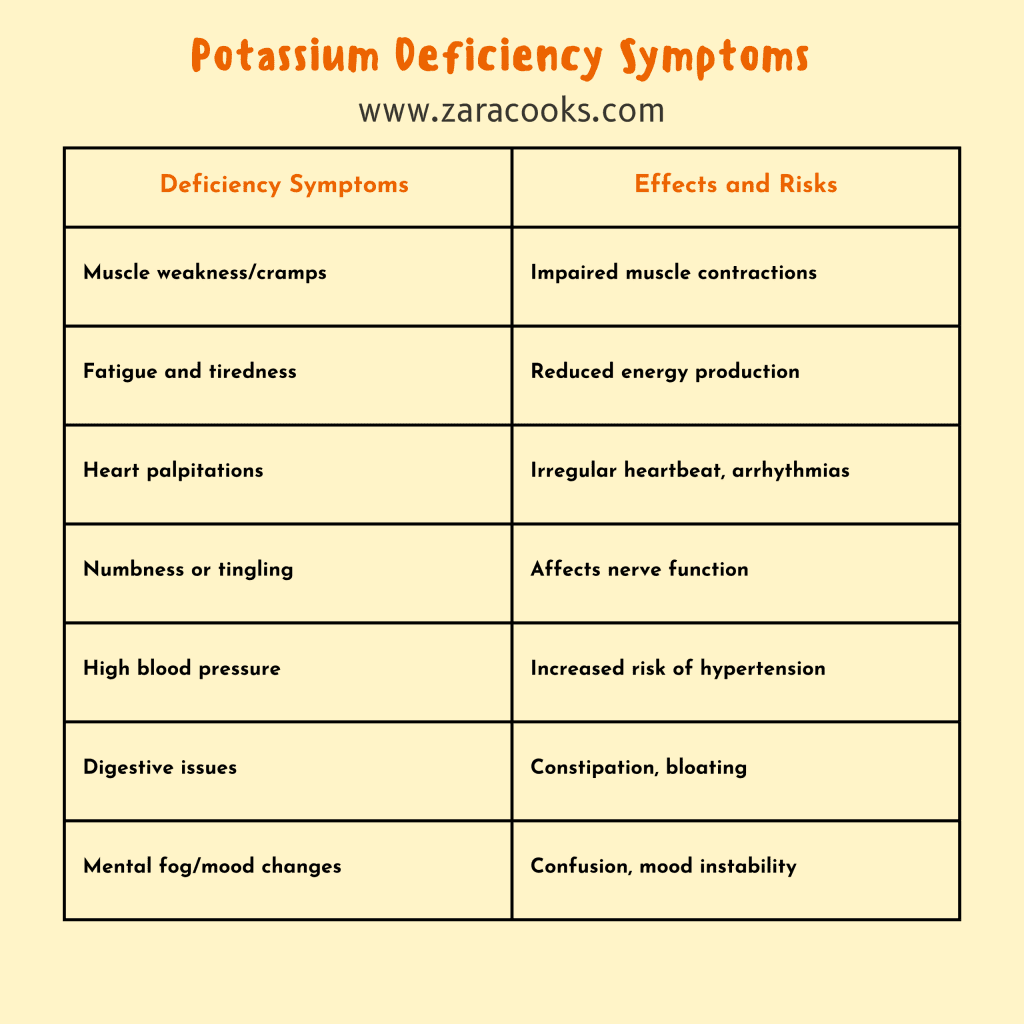Introduction:
Potassium is deeply embedded in the body’s inner workings, from heartbeat regulation to nerve signaling. So when levels drop—whether gradually or suddenly—it doesn’t take long before the body starts sounding the alarm. Unfortunately, the early signs of potassium deficiency are often subtle and easily overlooked. In this article, we’ll explore how to recognize the symptoms of low potassium (also known as hypokalemia) and understand why prolonged deficiency can pose serious health risks.
What Causes Potassium Deficiency?
Potassium deficiency doesn’t always result from a lack of potassium-rich foods. More often, it’s triggered by excessive losses through:
- Prolonged vomiting or diarrhea
- Use of certain medications, especially diuretics or laxatives
- Overtraining or heavy sweating without rehydration
- Kidney disorders or imbalances in other electrolytes
- Eating disorders or extremely restrictive diets
Even if your diet includes potassium, these conditions can lower your body’s potassium stores.

Early Symptoms: The Quiet Disruptors
Hydration plays a central role in electrolyte balance. Potassium works in tandem with sodium to maintain fluid balance both inside and outside your cells. When you’re dehydrated or lose fluids too quickly (due to sweating, illness, or medications), potassium losses often follow.
Tip: Staying well-hydrated supports your kidneys’ ability to regulate potassium and keeps your electrolyte levels stable.
Medications and Their Impact
Low potassium doesn’t always present obvious symptoms at first. In many cases, your body tries to adapt quietly. But as levels continue to fall, these early warning signs may appear:
- Muscle weakness
- Fatigue
- Mild cramps or muscle twitching
- Constipation
- General malaise
These signs are often dismissed or attributed to other causes—but they may indicate an electrolyte imbalance brewing beneath the surface..
Progression: When Things Get More Serious
As potassium drops further, more severe and potentially dangerous symptoms may develop:
- Heart rhythm irregularities (arrhythmias)
- Severe muscle cramping or paralysis
- Tingling or numbness (especially in the limbs)
- Confusion or mood changes
- Breathing difficulties (in extreme cases)
These symptoms occur because potassium is critical to nerve and muscle signaling—including the muscles of your heart and lungs. At dangerously low levels, potassium imbalance can be life-threatening and requires immediate medical attention.
Long-Term Risks of Chronic Potassium Deficiency
Chronic potassium deficiency, even at mildly low levels, can gradually wear down the body’s systems and lead to:
- Increased risk of hypertension (high blood pressure)
- Higher risk of stroke and cardiovascular disease
- Worsening bone health
- Reduced muscle performance and recovery
Persistent low potassium can also impair how the kidneys filter waste, putting extra strain on your renal system.
Summary Table: Symptoms and Risks of Potassium Deficiency
| Stage | Symptoms or Risks |
| Mild Deficiency | Fatigue, muscle weakness, constipation, mild cramps |
| Moderate Deficiency | Heart palpitations, numbness, muscle spasms |
| Severe Deficiency | Dangerous arrhythmias, paralysis, respiratory distress |
| Long-Term Consequences | High blood pressure, kidney strain, weakened bones, cardiovascular issues |
Conclusion
Potassium deficiency may start quietly, but it can quickly spiral into serious health concerns if left unchecked. In our next article, we’ll explore how the body absorbs potassium and the key strategies to improve and support your potassium balance.
